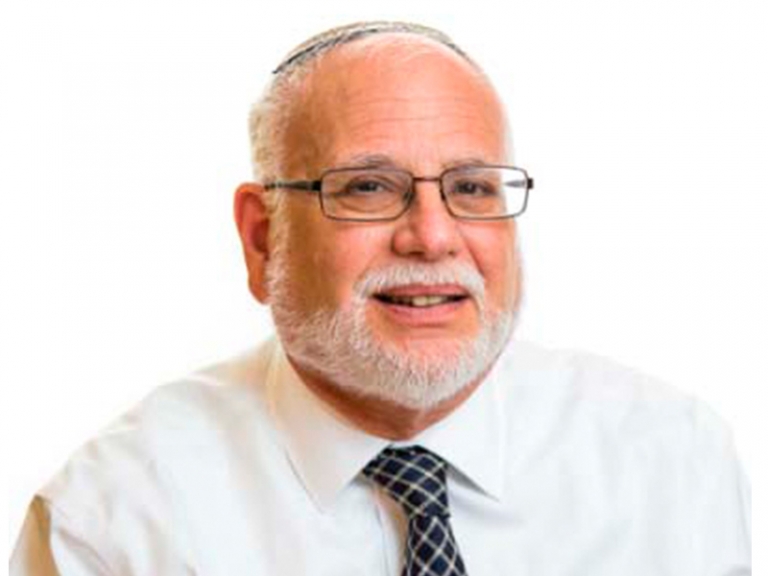D'var Torah by Dr. Kalman Stein, Interim Head of School

Dear Hebrew Academy Community:
The Torah seems to be unusually preoccupied with Avraham's age in our Parasha and in the many Midrashim which comment upon it. We are told in the text that Avraham Avinu was seventy-five years old when he was commanded to relocate to Canaan; that he was eighty-six when Yishmael was born; and twice that he was ninety-nine when he was commanded to perform the Mitzvah of Brit Milah. The Midrashim tell us that Avraham was either three, or forty or fifty when he first perceived Hashem, the Creator; that he was forty-eight at the time of Migdal Bavel; and that he was fifty-two when he and his wife began the process of spreading the message of monotheism. The Torah is not a history book; it does not list chronological details unless there is something important that we are to learn from them.
Rav Avigdor HaLevi Nebenzahl, the Rav of the Jewish Quarter (the Rova), sees in this listing of Avraham Avinu's ages a message which is significant for each of us as individuals, as parents and as educators. If one were to ask any of our younger students to describe Avraham Avinu, I have no doubt that he would be depicted as an old man with a long white beard. But just as we adults understand that old age came gradually and in stages for Avraham (as it does for each of us), it makes sense, Rav Nebenzahl explains, to understand that Avraham's profound spiritual and intellectual perception of God developed gradually, step by step throughout his life.
When Avraham Avinu, who grew up in an environment of idolatry, came to the conclusion that there was one Creator and Master of the world, that was an extraordinary achievement. But it was just a beginning. Avraham perceived the existence and power of God but he understood very little of God's attributes and of what it is that God expects from humanity. As the years passed, as Avraham grew intellectually and developed his relationship with the Almighty, he continued incrementally to appreciate more and more of God's attributes. At the age of fifty-two he had reached a level at which he was prepared to spread the message of monotheism; at seventy-five he was spiritually ready to enter Eretz Yisrael; and only at the age of ninety-nine--according to one version of the Midrash, ninety-six years after he first recognized God's existence--was he ready to understand and observe the Mitzvah of Brit Milah. At the end of the process, but only then, Rav Nebenzahl writes, Avraham had been able to discern on his own the 613 paths to merit Hashem's blessings.
A significant aspect of this process, Rav Nebenzahl explains, was one of self-discovery, of identifying and appreciating the Tzelem Elokim, the image of God, with which each person is endowed. As Avraham grew, he recognized not only more about Hashem but also more about himself. How did he do that? Avraham came to understand that the 613 paths to God -that which we call Torah- are the blueprint and instruction manual that we --God's creations-- are designed to follow and which answer a dual question: What does God want of you? But also, what do you want of yourself?
Avraham had to do it the hard way: He had to discern the 613 paths on his own. He had to put it all together without the printed instructions. It is a lot easier for us because God gave us the Torah; we are told rather clearly through both the Written and Oral Torah how to answer that dual question. But even if it is somewhat easier, it is naïve to believe that it happens all at once. If Avraham Avinu needed to grow spiritually step by step, stage by stage, we need not be surprised that that is exactly what we need to do and how we should look upon our own and our children's religious development.
And if the 613-part goal is the same for each of us, the means and pace of reaching that goal are not the same for any two of us. As Rav Nebenzahl wrote, when Chazal tell us that the wells that Yitzchak dug were not brand new, rather that he was re-digging wells originally dug by his father, they are telling us that Yitzchak had to discern the same 613 paths to Hashem that Avraham had discovered but that he had to do it his own way. That's what we mean when we say Elokai Avraham, Elokai Yitzchak and Elokai Yaakov: Each of the Patriarchs had to forge his own path to Hashem and each of us, and each of our children, have to follow the instruction manual that we call the Torah in our own individual ways as we strive to achieve that same goal.
Dr. Kalman Stein
Interim Head of School

